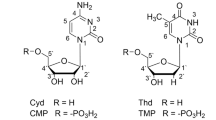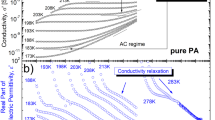Abstract
ECKERT1,2 reported that procaine and other local anaesthetics form pi-electron complexes with thiamine, and he suggested that such complexes in nerves might be responsible for local anaesthesia. Eckert's evidence for the procaine–thiamine interaction was based on the appearance of “charge transfer” bands in the ultraviolet absorption spectra of thiamine–procaine mixtures. Agin3, however, repeated Eckert's experiments and reported that the “charge transfer” bands were artefacts produced by the spectrophotometric analysis. Recent findings by Itokawa and Cooper4 are compatible with the long held hypothesis5 that thiamine and its phosphate esters have specific functions in conduction processes of nerve tissue that are independent of the known coenzyme roles of these compounds. Interaction between local anaesthetics and thiamine thus remains a likely chemical mechanism for local anaesthesia. Thiamine present in nervous tissue is largely in the form of thiamine pyrophosphate (TPP)4. We have investigated the possibility of binding between TPP and procaine by means of a nuclear magnetic resonance (NMR) technique found valuable in studying interactions between small molecules containing aromatic groups6.
This is a preview of subscription content, access via your institution
Access options
Subscribe to this journal
Receive 51 print issues and online access
$199.00 per year
only $3.90 per issue
Buy this article
- Purchase on Springer Link
- Instant access to full article PDF
Prices may be subject to local taxes which are calculated during checkout
Similar content being viewed by others
References
Eckert, T., Naturwissenchaften, 49, 18 (1962).
Eckert, T., Arzneimittel-Forsch., 12, 8 (1962).
Agin, D., Nature, 205, 805 (1965).
Itokawa, Y., and Cooper, J. R., Biochem. Pharmacol., 18, 545 (1969).
Muralt, A. von, in Neue Ergebnisse der Nervenphysiologie (Springer-Verlag, Berlin, 1958).
Thyrum, P. T., Luchi, R. J., and Conn, jun., J. L., J. Pharmacol. Exp. Therap., 164, 239 (1968).
Mikkelsen, K., and Nielsen, S. O., J. Phys. Chem., 64, 632 (1960).
Sable, H. Z., and Biaglow, J. E., Proc. US Nat. Acad. Sci., 54, 808 (1965).
Varian Associates, High Resolution NMR Spectra Catalog, Vol. I, spectrum 302 (1962).
Pople, J. A., Schneider, W. G., and Bernstein, H. J., in High-resolution Nuclear Magnetic Resonance (McGrraw-Hill, New York, 1959).
Groves, P. D., Huck, P. J., and Homer, J., Chem. Ind., 915 (1967).
Author information
Authors and Affiliations
Rights and permissions
About this article
Cite this article
THYRUM, P., LUCHI, R. & THYRUM, E. Nuclear Magnetic Resonance Evidence for Interactions between Procaine and Thiamine Pyrophosphate. Nature 223, 747–748 (1969). https://doi.org/10.1038/223747a0
Received:
Revised:
Issue Date:
DOI: https://doi.org/10.1038/223747a0
Comments
By submitting a comment you agree to abide by our Terms and Community Guidelines. If you find something abusive or that does not comply with our terms or guidelines please flag it as inappropriate.



